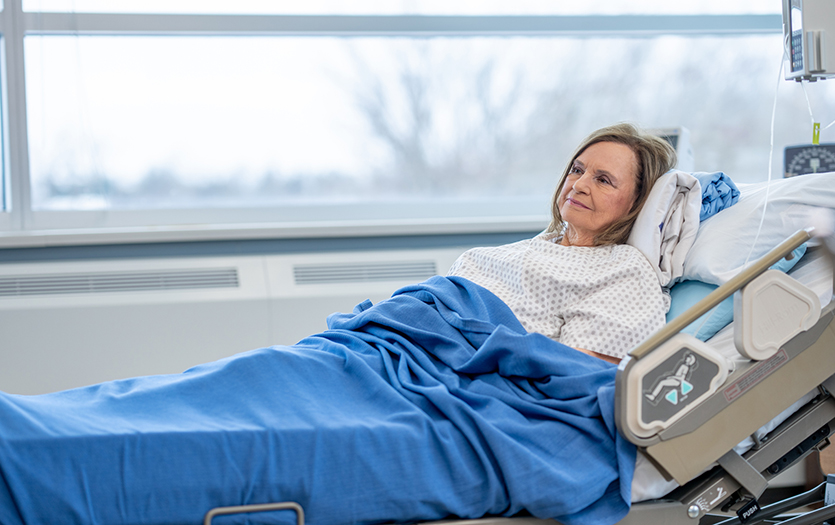
This post was written by Brooke Randol, MSN, RN MSN, RN, AGCNS-BC, CWS, CMSRN, clinical nurse specialist, Parkview Noble Center for Wound Healing.
Pressure injuries, also known as pressure ulcers, decubitus ulcers or bed sores, are damage to the skin and underlying soft tissue. They usually form over a bony part of the body like the tailbone or heels, or in relation to a medical device like a breathing tube that presses on the face. These painful injuries can affect quality of life and lead to dangerous infections.
November 16 is Worldwide Pressure Injury Prevention Day. In honor of this day of recognition, we want to share more information on how pressure injuries form and how to treat and prevent them.
How do people get pressure injuries?
Pressure injuries occur when the skin doesn’t get adequate blood supply due to prolonged pressure on the skin.
People with thinner skin and those who have limited or no ability to move are the most likely to develop pressure injuries. This includes people who:
- Experience paralysis or neuropathy
- Use wheelchairs
- Are bedbound or hospitalized
What are the risks involved with pressure injuries?
Pressure injuries can take a long time to heal if they are severe. Those who develop pressure injuries are at risk for infection, worsening injuries and decreased quality of life related to prolonged treatment.
How are pressure injuries treated?
Pressure injuries are diagnosed with “stages” based on the extent of the tissue damage present. These stages range from reddened, intact skin in stage 1 to exposure of bone in stage 4.
Treatment varies depending on the stage of the wound, but all pressure injury treatment should include avoiding, removing or redistributing the pressure on the wound area. This is called “offloading,” and it’s typically done by turning patients to different positions on a regular schedule, or using specialty mattresses and wheelchair cushions.
Stage 1 and 2 wounds are treated with protective dressings and offloading. More severe wounds in stage 3 or 4 are often treated with outpatient wound care visits that include removal of dead tissue and advanced wound care dressings. Severe injuries can take months or years to heal.
What can patients and caregivers do for prevention?
If you are hospitalized, move around at least every 2-3 hours. Try to get up and take your meals in the chair, if possible, and walk in the halls. Notify your nurse if you have pain from the bed or any medical device.
If you’re caring for a loved one at risk of pressure injuries, help them frequently change position to prevent prolonged pressure on the skin. Encourage a high-protein diet and help them stay hydrated. Additionally, help your loved one keep their skin clean, dry and well moisturized.
Notify your doctor if you notice an open wound or drainage from the skin in an area of pressure.
Parkview’s dedication to pressure injury prevention
The staff at Parkview are diligent in their prevention of pressure injuries. Our wound care team stays educated on new pressure injury research and integrates evidence-based care into nursing practice. Nurses screen every patient for risk of developing a pressure injury while hospitalized and will take appropriate preventative action depending on a patient’s risk level. For example, your nurse may assist you in turning every two hours, provide protein supplement drinks, apply protective foam dressings to your body, or offer you a special cushion to sit on while in the chair.
Additionally, throughout 2023 nearly 100 nurses from eight hospitals within Parkview Health were given extra education on pressure injury treatment and prevention. These “Skin Warriors” serve as a resource for their co-workers, develop and carry out improvement projects and ensure patients’ skin is protected while hospitalized. If an injury does occur, there is a thorough review of how and if it could have been prevented.
You can learn more about pressure injuries and Worldwide Pressure Injury Prevention Day at NPIAP.com.



